WISCANet: A Rapid Development Platform for Beyond 5G and 6G Radio System Prototyping
Abstract
1. Introduction
1.1. WISCANet and B5G/6G
- Size and Scalability
- WISCANet supports dozens of simultaneous radio devices, allowing a user to quickly configure and deploy OTA network applications without the usual overhead of actually building a network. This enables rapid OTA validation of novel network techniques that are typically only characterized in simulation. Emerging B5G/6G network techniques in this area include wireless resource allocation; mobility management; multi-access; internet-of-things (IOT); spectrum sensing and sharing; and distributed coherence.
- Flexibility
- WISCANet allows users to quickly reprogram radios for a variety of different tasks, enabling a range of customizable mission scenarios for characterizing channel estimation and predicition; interference avoidance, management, and cancellation; and localization.
- Programmability
- WISCANet automatically configures the connected radios with minimal user input, so end users can easily test a variety of adaptive techniques that modify the processing chains in real-time, including dynamic spectrum sensing and access; adaptive waveforms and fluid protocols; and novel modulation techniques.
- Hardware Integration
- Compatibility
- WISCANet is compatible with the industry-standard Ettus USRP SDRs and several programming languages (MATLAB, Python, C/C++, Rust, etc.), making it accessible and budget-friendly for academic research institutions or independent developers. This further facilitates portability and interoperability between different devices, enabling a variety of IoT applications.
- Upgradability
- WISCANet can be augmented with high-performance equipment like OctoClock distribution modules to enable precise synchronization and time control for sensitive applications such as ultra-reliable, low-latency communications; precise localization; and distributed coherence.
- Stability
- WISCANet features phase synchronization and stability features between connected radios, enabling massive multiple-input, multiple-output (MIMO) applications and numerous multi-antenna techniques.
1.2. Contributions
- Describe recent updates to the WISCANet testbed.
- Demonstrate several sub-6 and mmWave OTA applications on the WISCANet testbed, including:
- –
- mmWave Communications;
- –
- 5G positioning and timing;
- –
- distributed mosaic beamforming;
- –
- adaptive waveform deployment; and
- –
- dynamic spectrum access.
- Release an updated version of WISCANet under the Lesser GNU Public License Version 3.0 (LGPLv3.0).
- Release example applications for WISCANet under the LGPLv3.0.
1.3. Organization
2. Background
2.1. Recent Advances in B5G/6G Technologies
2.2. Software-Defined Radios
2.2.1. Ettus USRP and UHD
2.2.2. GNURadio
2.2.3. SoapySDR
2.3. Related SDR Networks
2.4. mmWave Testbeds and Frameworks
2.5. WISCANet vs. Traditional Approaches
3. System Design
| Listing 1. Example edge node YAML configuration file. This file configures a simple 4-channel communications application using an Ettus X310, MATLAB runtime, and 10 MHz sampling rate at a center frequency of 907 MHz. |
 |
3.1. Application Programming Interface
rx_buffer = rx_usrp(start_time, num_chans);
where the buffer’s will be complex double matrices of () containing time-domain I/Q samples. The system expects them to be scaled into .tx_usrp(tx_buffer, start_time, num_chans, reference_power);
3.2. Phase Synchronization and Stability
3.3. WISCANet-Lite
3.4. WISCANet GUI
3.5. Genie Channel
3.6. Example Lab Deployment
3.7. Cross Platform Operation
3.8. mmWave: Millimeter Wave Frontends
3.9. GPU Acceleration
3.10. FPGA Acceleration and Integrated Testing
3.11. Machine Learning
4. Over-the-Air Demonstrations
4.1. Distributed Mosaic Beamforming
4.2. Ping-Pong
4.3. Adaptive Waveform Development
4.4. Dynamic Spectrum Access
4.5. 60 GHz Communications System
4.6. 5G-Based Positioning, Navigation and Timing
5. Conclusions
Author Contributions
Funding
Data Availability Statement
Conflicts of Interest
Abbreviations
| 5G | fifth generation |
| ABI | Application Binary Interface |
| API | Application Programming Interface |
| B5G | beyond-5G |
| COTS | common off the shelf |
| CSI | channel state information |
| CUDA | Compute Unified Device Architecture |
| EVK | Evaluation Kit |
| FPGA | Field Programmable Gate Array |
| FR1 | NR Frequency Range 1 |
| FR2 | NR Frequency Range 2 |
| GPS | Global Positioning System |
| GPSDO | GPS Disciplined Oscillator |
| GUI | Graphical User Interface |
| IP | Intellectual Property |
| JRCPNT | joint radar, communications, positioning, navigation, and timing |
| LGPLv3.0 | Lesser GNU Public License Version 3.0 |
| MAC | Media Access Control Layer |
| MIMO | multiple-input, multiple-output |
| NFS | Network File System |
| NI | National Instruments |
| NR | New Radio |
| OTA | over-the-air |
| PHY | Physical Layer |
| RENEW | Reconfigurable Ecosystem for Next-generation End-to-end Wireless |
| RF | radio-frequency |
| RFFE | RF front-end |
| RFSoC | RF system-on-chip |
| SISO | single input, single output |
| SDR | software-defined radio |
| SDR-N | software-defined radio network |
| SFFPC | Small Form Factor PC |
| SSH | Secure Shell |
| TCP | Transmission Control Protocol |
| UDP | User Datagram Protocol |
| UHD | USRP Hardware Driver |
| USB | Universal Serial Bus |
| USRP | Universal Software Radio Peripheral |
| WISCA | The Center for Wireless Information Systems and Computational Architectures |
| WISCANet | WISCA Software-Defined Radio Network |
| YAML | YAML Ai not Markup Language |
References
- FG-NET-2030. Network 2030 a Blueprint of Technology, Applications and Market Drivers towards the Year 2030 and Beyond. Available online: https://www.itu.int/en/ITU-T/focusgroups/net2030/Documents/White_Paper.pdf (accessed on 30 September 2022).
- Döhler, A. Report from the next generation mobile networks alliance. IEEE Netw. 2021, 35, 3. [Google Scholar] [CrossRef]
- Jiang, W.; Han, B.; Habibi, M.A.; Schotten, H.D. The road towards 6G: A comprehensive survey. IEEE Open J. Commun. Soc. 2021, 2, 334–366. [Google Scholar] [CrossRef]
- Cui, Y.; Liu, F.; Jing, X.; Mu, J. Integrating sensing and communications for ubiquitous IoT: Applications, trends, and challenges. IEEE Netw. 2021, 35, 158–167. [Google Scholar] [CrossRef]
- Paul, B.; Chiriyath, A.R.; Bliss, D.W. Survey of RF communications and sensing convergence research. IEEE Access 2016, 5, 252–270. [Google Scholar] [CrossRef]
- Herschfelt, A.; Chiriyath, A.R.; Srinivas, S.; Bliss, D.W. An introduction to spectral convergence: Challenges and paths to solutions. In Proceedings of the 2021 1st IEEE International Online Symposium on Joint Communications & Sensing (JC&S), Dresden, Germany, 23–24 February 2021; pp. 1–6. [Google Scholar]
- Chiriyath, A.R.; Paul, B.; Bliss, D.W. Radar-communications convergence: Coexistence, cooperation, and co-design. IEEE Trans. Cogn. Commun. Netw. 2017, 3, 1–12. [Google Scholar] [CrossRef]
- Herschfelt, A. Vehicular RF Convergence: Simultaneous Radar, Communications, and PNT for Urban Air Mobility and Automotive Applications. In Proceedings of the 2012 IEEE Radar Conference (RadarConf20), Florence, Italy, 21–25 September 2020. [Google Scholar]
- Chiriyath, A.R. Fundamental Limits on Performance for Cooperative Radar-Communications Coexistence. Ph.D. Thesis, Arizona State University, Tempe, AZ, USA, 2018. [Google Scholar]
- Uhrie, R.; Bliss, D.W.; Chakrabarti, C.; Ogras, U.Y.; Brunhaver, J. Machine understanding of domain computation for domain-specific system-on-chips (dssoc). In Open Architecture/Open Business Model Net-Centric Systems and Defense Transformation 2019; SPIE: Bellingham, WA, USA, 2019; Volume 11015, pp. 180–187. [Google Scholar]
- Chiriyath, A.R.; Herschfelt, A.; Srinivas, S.; Bliss, D.W. Technological Advances to Facilitate Spectral Convergence. In Proceedings of the 2021 55th Asilomar Conference on Signals, Systems, and Computers, Pacific Grove, CA, USA, 31 October–3 November 2021; pp. 623–628. [Google Scholar]
- Holt, C.M. Novel Learning-Based Task Schedulers for Domain-Specific SoCs. Ph.D. Thesis, Arizona State University, Tempe, AZ, USA, 2020. [Google Scholar]
- Herschfelt, A. Simultaneous Positioning and Communications: Hybrid Radio Architecture, Estimation Techniques, and Experimental Validation. Ph.D. Thesis, Arizona State University, Tempe, AZ, USA, 2019. [Google Scholar]
- Gutierrez, R.M.; Yu, H.; Chiriyath, A.R.; Gubash, G.; Herschfelt, A.; Bliss, D.W. Joint Sensing and Communications Multiple-Access System Design and Experimental Characterization. In Proceedings of the 2019 IEEE Aerospace Conference, Big Sky, MT, USA, 2–9 March 2019; pp. 1–8. [Google Scholar]
- Mahmood, N.H.; Alves, H.; López, O.A.; Shehab, M.; Osorio, D.P.M.; Latva-Aho, M. Six key features of machine type communication in 6G. In Proceedings of the 2020 2nd 6G Wireless Summit (6G SUMMIT), Levi, Finland, 17–20 March 2020; pp. 1–5. [Google Scholar]
- Rodrigues, T.K.; Liu, J.; Kato, N. Offloading decision for mobile multi-access edge computing in a multi-tiered 6G network. IEEE Trans. Emerg. Top. Comput. 2021, 10, 1414–1427. [Google Scholar] [CrossRef]
- Morocho-Cayamcela, M.E.; Lee, H.; Lim, W. Machine learning for 5G/B5G mobile and wireless communications: Potential, limitations, and future directions. IEEE Access 2019, 7, 137184–137206. [Google Scholar] [CrossRef]
- Nawaz, S.J.; Sharma, S.K.; Wyne, S.; Patwary, M.N.; Asaduzzaman, M. Quantum machine learning for 6G communication networks: State-of-the-art and vision for the future. IEEE Access 2019, 7, 46317–46350. [Google Scholar] [CrossRef]
- Chowdhury, M.Z.; Shahjalal, M.; Ahmed, S.; Jang, Y.M. 6G wireless communication systems: Applications, requirements, technologies, challenges, and research directions. IEEE Open J. Commun. Soc. 2020, 1, 957–975. [Google Scholar] [CrossRef]
- Shafin, R.; Liu, L.; Chandrasekhar, V.; Chen, H.; Reed, J.; Zhang, J.C. Artificial intelligence-enabled cellular networks: A critical path to beyond-5G and 6G. IEEE Wirel. Commun. 2020, 27, 212–217. [Google Scholar] [CrossRef]
- Strinati, E.C.; Barbarossa, S.; Gonzalez-Jimenez, J.L.; Ktenas, D.; Cassiau, N.; Maret, L.; Dehos, C. 6G: The next frontier: From holographic messaging to artificial intelligence using subterahertz and visible light communication. IEEE Veh. Technol. Mag. 2019, 14, 42–50. [Google Scholar] [CrossRef]
- Pan, C.; Ren, H.; Wang, K.; Kolb, J.F.; Elkashlan, M.; Chen, M.; Di Renzo, M.; Hao, Y.; Wang, J.; Swindlehurst, A.L.; et al. Reconfigurable intelligent surfaces for 6G systems: Principles, applications, and research directions. IEEE Commun. Mag. 2021, 59, 14–20. [Google Scholar] [CrossRef]
- Basar, E. Reconfigurable intelligent surface-based index modulation: A new beyond MIMO paradigm for 6G. IEEE Trans. Commun. 2020, 68, 3187–3196. [Google Scholar] [CrossRef]
- Alexandropoulos, G.C.; Lerosey, G.; Debbah, M.; Fink, M. Reconfigurable intelligent surfaces and metamaterials: The potential of wave propagation control for 6G wireless communications. arXiv 2020, arXiv:2006.11136. [Google Scholar]
- Akeela, R.; Dezfouli, B. Software-defined Radios: Architecture, state-of-the-art, and challenges. Comput. Commun. 2018, 128, 106–125. [Google Scholar] [CrossRef]
- Zhang, J.; Jia, J.; Zhang, Q.; Lo, E.M. Implementation and evaluation of cooperative communication schemes in software-defined radio testbed. In Proceedings of the 2010 Proceedings IEEE INFOCOM, San Diego, CA, USA, 14–19 March 2010; pp. 1–9. [Google Scholar]
- Holtom, J.; Gubash, G.; Herschfelt, A.; Ma, O.; Standage-Beier, W.; Yu, H.; Bliss, D.W. Rapid implementation and demonstration of radio applications using wiscanet. In Proceedings of the 2021 IEEE 32nd Annual International Symposium on Personal, Indoor and Mobile Radio Communications (PIMRC), Helsinki, Finland, 13–16 September 2021; pp. 1500–1505. [Google Scholar]
- Xilinx Adaptive SoCs. Available online: https://www.xilinx.com/products/silicon-devices/soc.html (accessed on 30 September 2022).
- Amakawa, S.; Aslam, Z.; Buckwater, J.; Caputo, S.; Chaoub, A.; Chen, Y.; Corre, Y.; Fujishima, M.; Ganghua, Y.; Gao, S.; et al. White Paper on RF Enabling 6G—Opportunities and Challenges from Technology to Spectrum. 2021. Available online: https://biblio.ugent.be/publication/8704523 (accessed on 30 September 2022).
- Yu, H.; Lee, H.; Gutierrez, R.M.; Herschfelt, A.; Bliss, D.W. WISCA SDR Network. In Proceedings of the MILCOM 2017–2017 IEEE Military Communications Conference (MILCOM), Baltimore, MD, USA, 23–25 October 2017; pp. 750–755. [Google Scholar]
- Abdellatif, H.; Ariyarathna, V.; Petrushkevich, S.; Madanayake, A.; Jornet, J.M. A Real-Time Ultra-broadband Software-Defined Radio Platform for Terahertz Communications. In Proceedings of the IEEE INFOCOM 2022—IEEE Conference on Computer Communications Workshops (INFOCOM WKSHPS), New York, NY, USA, 2–5 May 2022; pp. 1–2. [Google Scholar] [CrossRef]
- Schifferer, B.; Titericz, G.; Deotte, C.; Henkel, C.; Onodera, K.; Liu, J.; Tunguz, B.; Oldridge, E.; De Souza Pereira Moreira, G.; Erdem, A. GPU accelerated feature engineering and training for recommender systems. In Proceedings of the Recommender Systems Challenge 2020; Association for Computing Machinery: New York, NY, USA, 2020; pp. 16–23. [Google Scholar]
- Mangiatordi, F.; Pallotti, E. A GPU accelerated framework for monitoring LTE/5G interference to DVB-T systems. In Proceedings of the 2021 AEIT International Annual Conference (AEIT), Milan, Italy, 4–8 October 2021; pp. 1–6. [Google Scholar]
- Talib, M.A.; Majzoub, S.; Nasir, Q.; Jamal, D. A systematic literature review on hardware implementation of artificial intelligence algorithms. J. Supercomput. 2021, 77, 1897–1938. [Google Scholar] [CrossRef]
- Steinkraus, D.; Buck, I.; Simard, P. Using GPUs for machine learning algorithms. In Proceedings of the Eighth International Conference on Document Analysis and Recognition (ICDAR’05), Seoul, Korea, 31 August–1 September 2005; pp. 1115–1120. [Google Scholar]
- Fernandes, S.; Karmouch, A. Vertical mobility management architectures in wireless networks: A comprehensive survey and future directions. IEEE Commun. Surv. Tutor. 2010, 14, 45–63. [Google Scholar] [CrossRef]
- Dinh, C.T.; Tran, N.H.; Nguyen, M.N.; Hong, C.S.; Bao, W.; Zomaya, A.Y.; Gramoli, V. Federated learning over wireless networks: Convergence analysis and resource allocation. IEEE/ACM Trans. Netw. 2020, 29, 398–409. [Google Scholar] [CrossRef]
- Qi, Q.; Chen, X.; Zhong, C.; Zhang, Z. Integration of energy, computation and communication in 6G cellular internet of things. IEEE Commun. Lett. 2020, 24, 1333–1337. [Google Scholar] [CrossRef]
- Khan, L.U.; Yaqoob, I.; Imran, M.; Han, Z.; Hong, C.S. 6G wireless systems: A vision, architectural elements, and future directions. IEEE Access 2020, 8, 147029–147044. [Google Scholar] [CrossRef]
- Li, X.; Wang, Q.; Liu, M.; Li, J.; Peng, H.; Piran, M.J.; Li, L. Cooperative wireless-powered NOMA relaying for B5G IoT networks with hardware impairments and channel estimation errors. IEEE Internet Things J. 2020, 8, 5453–5467. [Google Scholar] [CrossRef]
- Le, H.A.; Van Chien, T.; Nguyen, T.H.; Choo, H.; Nguyen, V.D. Machine Learning-Based 5G-and-Beyond Channel Estimation for MIMO-OFDM Communication Systems. Sensors 2021, 21, 4861. [Google Scholar] [CrossRef] [PubMed]
- Yang, P.; Xiao, Y.; Xiao, M.; Li, S. 6G wireless communications: Vision and potential techniques. IEEE Netw. 2019, 33, 70–75. [Google Scholar] [CrossRef]
- Shah, S.D.A.; Gregory, M.A.; Li, S. Cloud-native network slicing using software defined networking based multi-access edge computing: A survey. IEEE Access 2021, 9, 10903–10924. [Google Scholar] [CrossRef]
- Haneche, H.; Ouahabi, A.; Boudraa, B. New mobile communication system design for Rayleigh environments based on compressed sensing-source coding. IET Commun. 2019, 13, 2375–2385. [Google Scholar] [CrossRef]
- Haneche, H.; Ouahabi, A.; Boudraa, B. Compressed sensing-speech coding scheme for mobile communications. Circuits Syst. Signal Process. 2021, 40, 5106–5126. [Google Scholar] [CrossRef]
- Nguyen, D.C.; Ding, M.; Pathirana, P.N.; Seneviratne, A.; Li, J.; Niyato, D.; Dobre, O.; Poor, H.V. 6G Internet of Things: A comprehensive survey. IEEE Internet Things J. 2021, 9, 359–383. [Google Scholar] [CrossRef]
- Dao, N.N.; Pham, Q.V.; Tu, N.H.; Thanh, T.T.; Bao, V.N.Q.; Lakew, D.S.; Cho, S. Survey on aerial radio access networks: Toward a comprehensive 6G access infrastructure. IEEE Commun. Surv. Tutor. 2021, 23, 1193–1225. [Google Scholar] [CrossRef]
- Ettus Research—The Leader in Software Defined Radio (SDR). Available online: https://www.ettus.com/ (accessed on 30 September 2022).
- Instruments, N. Software Defined Radios. Available online: https://novatorsolutions.com/products/hugin4000/?gclid=EAIaIQobChMIma_H8L6l-gIV16uWCh22OQD_EAAYASAAEgIRdvD_BwE (accessed on 30 September 2022).
- USRP Hardware Driver (UHD)—Ettus Research. Available online: https://www.ettus.com/sdr-software/uhd-usrp-hardware-driver/ (accessed on 30 September 2022).
- MathWorks. USRP Support from Communications Toolbox. Available online: https://jp.mathworks.com/hardware-support/usrp.html (accessed on 30 September 2022).
- GNURadio: The Free & Open Software Radio Ecosystem. 2020. Available online: https://www.gnuradio.org/ (accessed on 30 September 2022).
- GNURadio. 2020. Available online: https://github.com/gnuradio/gnuradio (accessed on 30 September 2022).
- Vilches, T.; Dujovne, D. GNUradio and 802.11: Performance evaluation and limitations. IEEE Netw. 2014, 28, 27–31. [Google Scholar] [CrossRef]
- Pothosware. Welcome to the SoapySDR Project. 2020. Available online: https://www.pothosware.com/ (accessed on 30 September 2022).
- Pothosware. Pothosware, 2020. Available online: https://github.com/pothosware (accessed on 30 September 2022).
- Shepard, C.; Yu, H.; Anand, N.; Li, E.; Marzetta, T.; Yang, R.; Zhong, L. Argos: Practical Many-Antenna Base Stations. In Proceedings of the 18th Annual International Conference on Mobile Computing and Networking, Istanbul, Turkey, 22–26 August 2012; pp. 53–64. [Google Scholar]
- Doost-Mohammady, R.; Bejarano, O.; Zhong, L.; Cavallaro, J.R.; Knightly, E.; Mao, Z.M.; Li, W.W.; Chen, X.; Sabharwal, A. RENEW: Programmable and Observable Massive MIMO Networks. In Proceedings of the 2018 52nd Asilomar Conference on Signals, Systems, and Computers, Pacific Grove, CA, USA, 28–31 October 2018; pp. 1654–1658. [Google Scholar]
- University, R. RENEW: Reconfigurable Eco-system for Next-generation End-to-end Wireless. In Proceedings of the 2018 52nd Asilomar Conference on Signals, Systems, and Computers, Pacific Grove, CA, USA, 28–31 October 2020. [Google Scholar]
- Anand, N.; Aryafar, E.; Knightly, E.W. WARPlab: A Flexible Framework for Rapid Physical Layer Design. In Proceedings of the 2010 ACM Workshop on Wireless of the Students, by the Students, for the Students, Chicago, IL, USA, 20–24 September 2010; pp. 53–56. [Google Scholar]
- Duarte, M.; Murphy, P.; Hunter, C.; Gupta, S.; Sabharwal, A. WARPLab: Multi-Node Prototyping with Real Wireless Data. Available online: https://warpproject.org/trac/raw-attachment/wiki/2010WARPLab (accessed on 30 September 2022).
- Minden, G.J.; Evans, J.B.; Searl, L.; DePardo, D.; Petty, V.R.; Rajbanshi, R.; Newman, T.; Chen, Q.; Weidling, F.; Guffey, J.; et al. KUAR: A Flexible Software-Defined Radio Development Platform. In Proceedings of the 2007 2nd IEEE International Symposium on New Frontiers in Dynamic Spectrum Access Networks, Dublin, Ireland, 17–20 April 2007; pp. 428–439. [Google Scholar] [CrossRef][Green Version]
- Samoohi, S.; Graff, C. Challenges of Using Software Defined Radio Platforms in Validating Cognitive Network Concepts. In Proceedings of the 2010 IEEE International Conference on Wireless Information Technology and Systems, Honolulu, HI, USA, 28 August–3 September 2010; pp. 1–4. [Google Scholar]
- Asadi, A.; Mancuso, V.; Gupta, R. An SDR-based Experimental Study of Outband D2D Communications. In Proceedings of the IEEE INFOCOM 2016—The 35th Annual IEEE International Conference on Computer Communications, San Francisco, CA, USA, 10–14 April 2016; pp. 1–9. [Google Scholar] [CrossRef]
- Yau, S.; Ge, L.; Hsieh, P.C.; Hou, I.H.; Cui, S.; Kumar, P.; Ekbal, A.; Kundargi, N. WiMAC: Rapid Implementation Platform for User Definable MAC Protocols Through Separation. SIGCOMM Comput. Commun. Rev. 2015, 45, 109–110. [Google Scholar] [CrossRef]
- Shearman, S.; Kimery, J. Software Defined Radio Prototyping Platforms Enable a Flexible Approach to Design [Application Notes]. IEEE Microw. Mag. 2012, 13, 76–80. [Google Scholar] [CrossRef]
- Leferman, M.J. Rapid Prototyping Interface for Software Defined Radio Experimentation. Ph.D. Thesis, Worcester Polytechnic Institute, Worcester, MA, USA, 2010. [Google Scholar]
- Polese, M.; Restuccia, F.; Gosain, A.; Jornet, J.; Bhardwaj, S.; Ariyarathna, V.; Mandal, S.; Zheng, K.; Dhananjay, A.; Mezzavilla, M.; et al. MillimeTera: Toward a large-scale open-source mmWave and terahertz experimental testbed. In Proceedings of the 3rd ACM Workshop on Millimeter-Wave Networks and Sensing Systems, Los Cabos, Mexico, 25 October 2019; pp. 27–32. [Google Scholar]
- Yanik, M.E.; Wang, D.; Torlak, M. Development and demonstration of MIMO-SAR mmWave imaging testbeds. IEEE Access 2020, 8, 126019–126038. [Google Scholar] [CrossRef]
- Synchronization and MIMO Capability with USRP Devices. Available online: https://kb.ettus.com/Synchronization_and_MIMO_Capability_with_USRP_Devices (accessed on 20 January 2021).
- Podman. Red Hat. Available online: https://podman.io/ (accessed on 30 September 2022).
- Docker Inc. Empowering App Development for Developers. Available online: https://www.docker.com/ (accessed on 30 September 2022).
- Holtom, J.; Ma, O.; Herschfelt, A.; Landon, D.G.; Bliss, D.W. Distributed Beamforming Techniques for Flexible Communications Networks. In Proceedings of the 2021 55th Asilomar Conference on Signals, Systems, and Computers, Pacific Grove, CA, USA, 28 April 2021; pp. 400–404. [Google Scholar] [CrossRef]
- CUDA Toolkit—Free Tools and Training. 2022. Available online: https://developer.nvidia.com/cuda-toolkit (accessed on 30 September 2022).
- New AMD ROCM Information Portal—ROCM V4.5 and above. Available online: https://rocmdocs.amd.com/en/latest/Current_Release_Notes/Current-Release-Notes.html (accessed on 30 September 2022).
- Bliss, D.W.; Kraut, S.; Agaskar, A. Transmit and receive space-time-frequency adaptive processing for cooperative distributed MIMO communications. In Proceedings of the IEEE International Conference onAcoustics, Speech and Signal Processing (ICASSP), Kyoto, Japan, 25–30 March 2012; pp. 5221–5224. [Google Scholar]
- Bhat, G.; Srinivas, S.; Chagari, V.; Park, J.; McGiffen, T.; Lee, H.; Bliss, D.W.; Chakrabarti, C.; Ogras, U.Y. Fluid Wireless Protocols: Energy-Efficient Design and Implementation. In Proceedings of the 15th IEEE/ACM Symposium on Embedded Systems for Real-Time Multimedia, Seoul, Korea, 15–20 October 2017; pp. 22–31. [Google Scholar] [CrossRef]
- McGiffen, T.; Srinivas, S.; Bliss, D.W. A protocol development kit for wireless systems. In Proceedings of the 2018 IEEE 4th World Forum on Internet of Things (WF-IoT), Singapore, 5–8 February 2018; pp. 389–394. [Google Scholar] [CrossRef]
- Candan, C. A Method For Fine Resolution Frequency Estimation From Three DFT Samples. IEEE Signal Process. Lett. 2011, 18, 351–354. [Google Scholar] [CrossRef]
- Herschfelt, A.; Yu, H.; Wu, S.; Srinivas, S.; Li, Y.; Sciammetta, N.; Smith, L.; Rueger, K.; Lee, H.; Chakrabarti, C.; et al. Joint positioning-communications system design and experimental demonstration. In Proceedings of the 2019 IEEE/AIAA 38th Digital Avionics Systems Conference (DASC), San Diego, CA, USA, 8–12 September 2019; pp. 1–6. [Google Scholar]
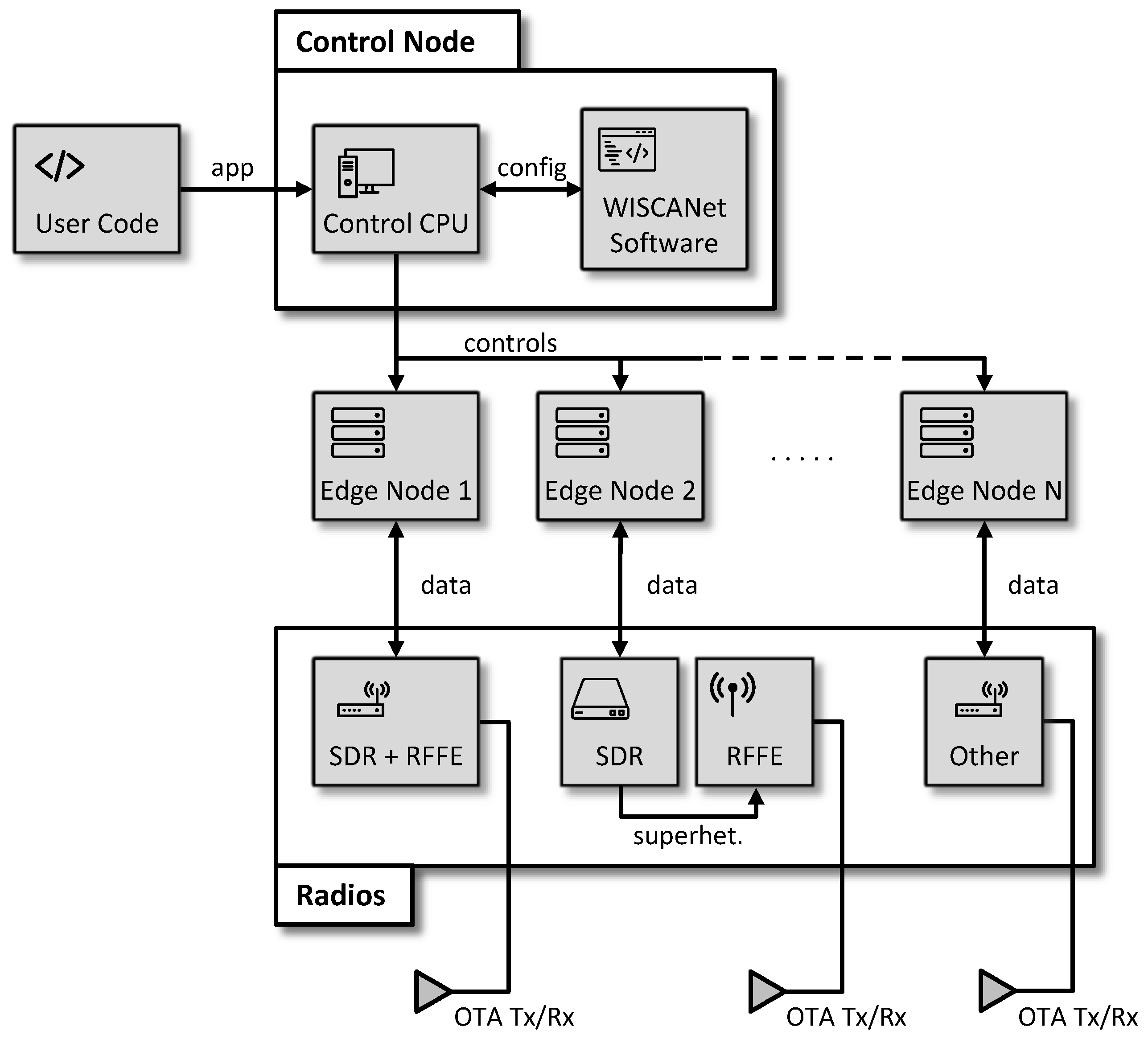




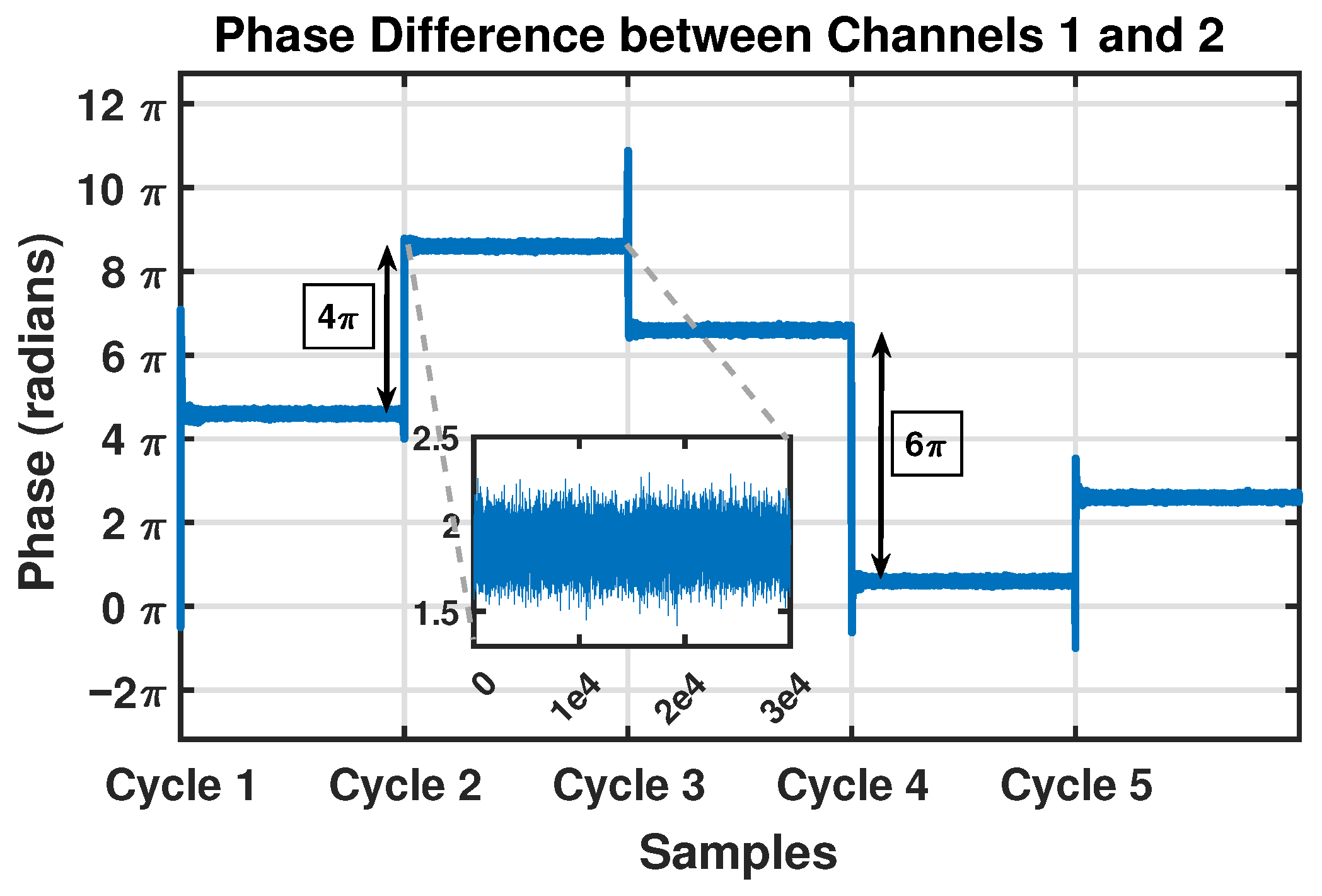

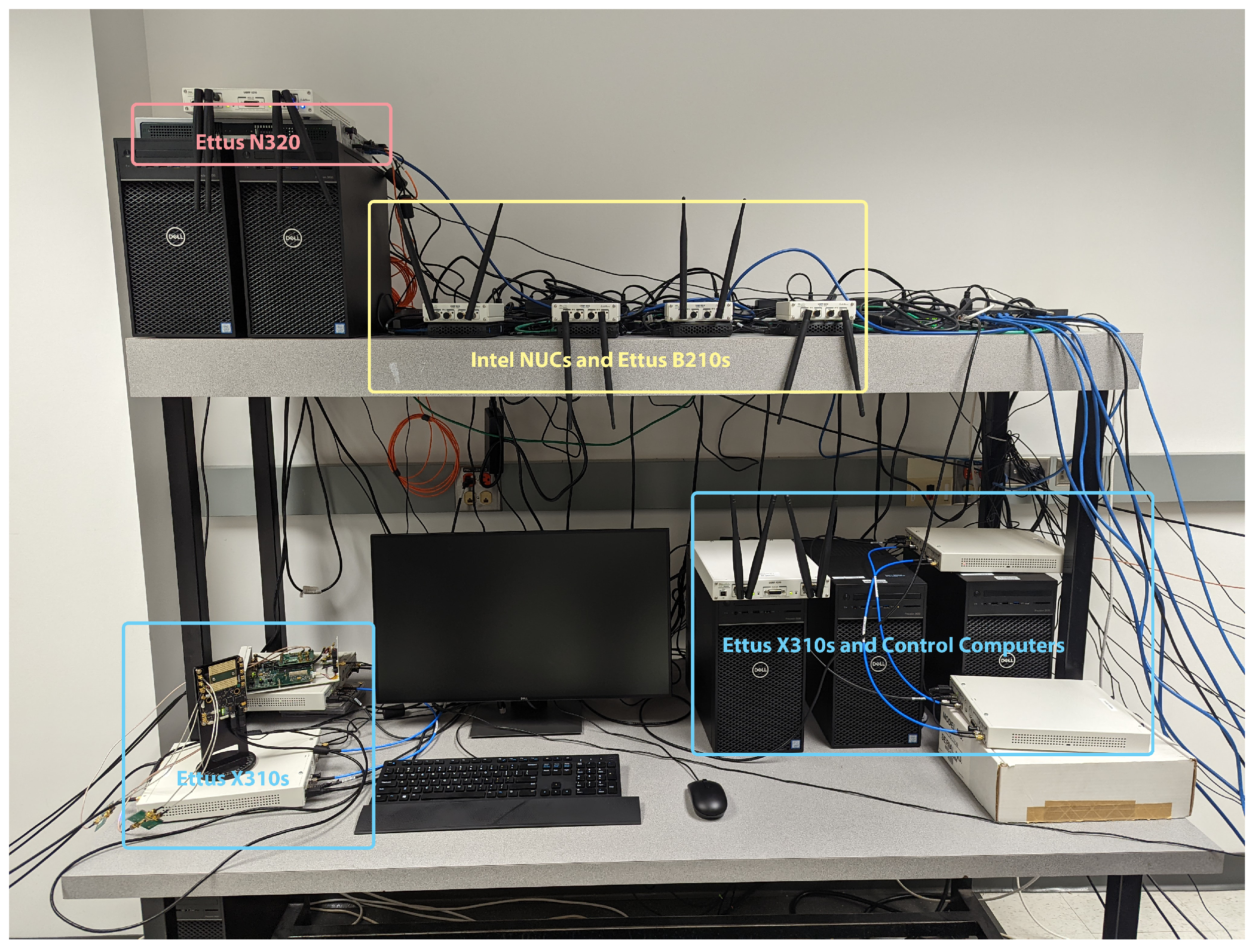






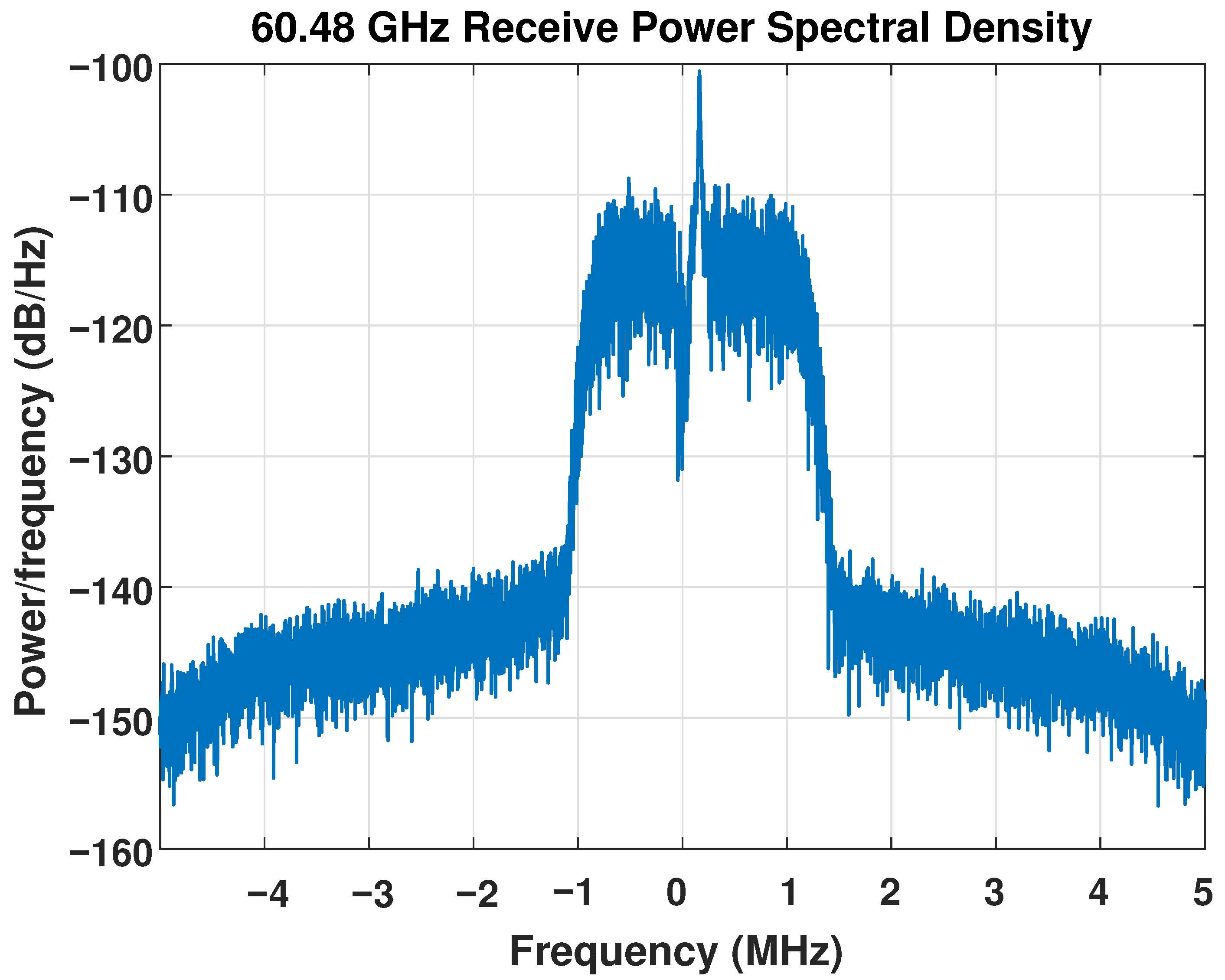
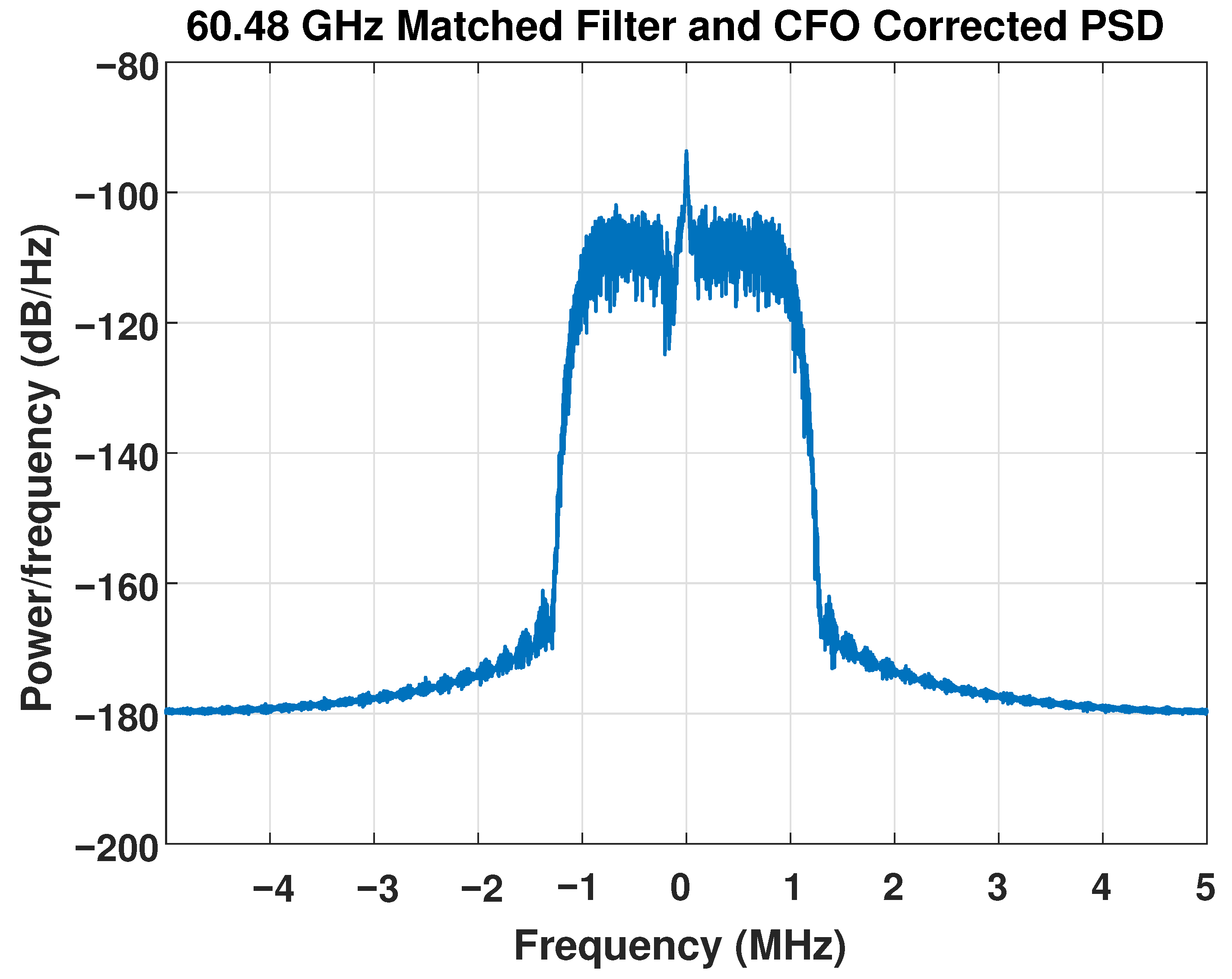
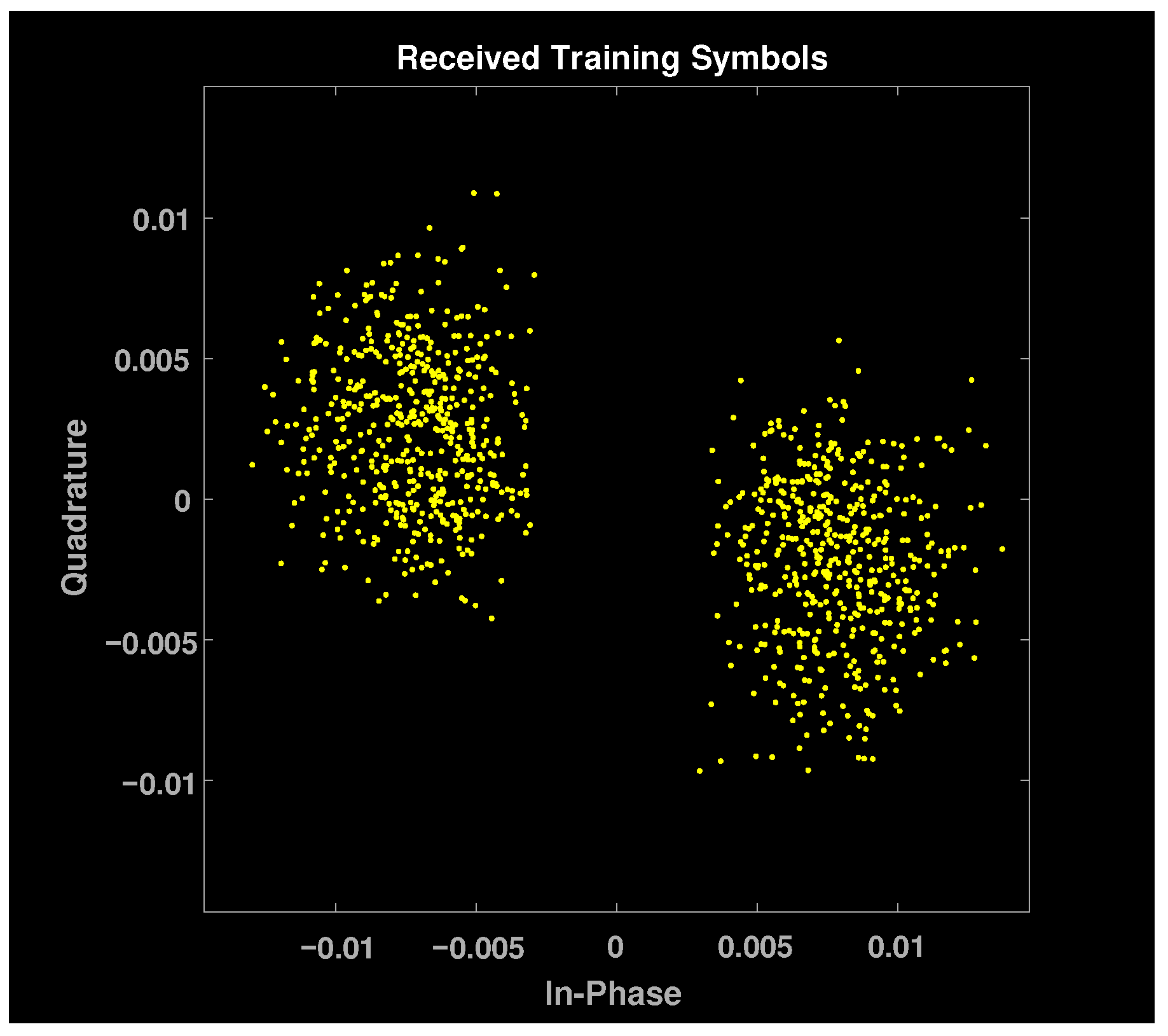





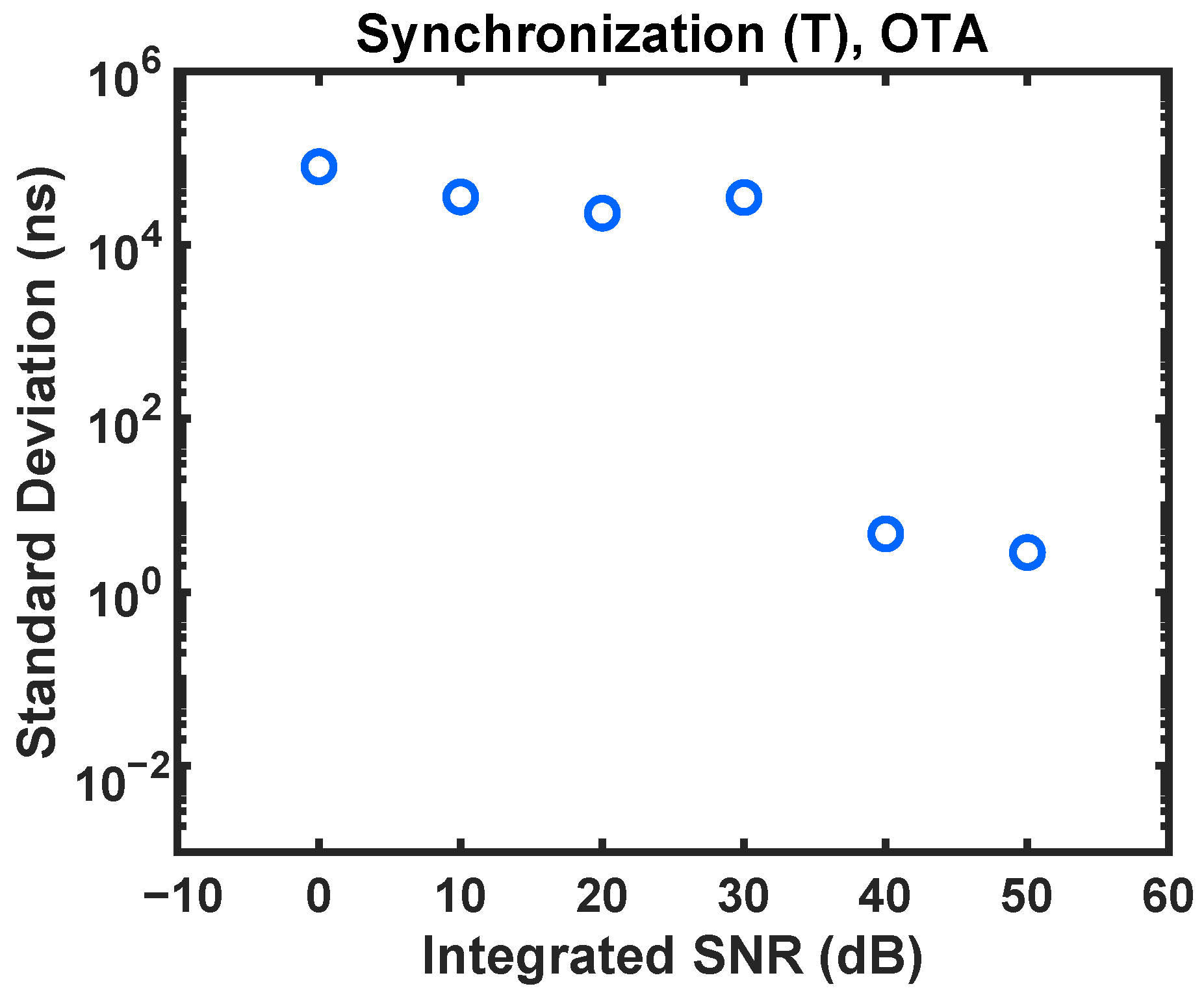
Publisher’s Note: MDPI stays neutral with regard to jurisdictional claims in published maps and institutional affiliations. |
© 2022 by the authors. Licensee MDPI, Basel, Switzerland. This article is an open access article distributed under the terms and conditions of the Creative Commons Attribution (CC BY) license (https://creativecommons.org/licenses/by/4.0/).
Share and Cite
Holtom, J.; Herschfelt, A.; Lenz, I.; Ma, O.; Yu, H.; Bliss, D.W. WISCANet: A Rapid Development Platform for Beyond 5G and 6G Radio System Prototyping. Signals 2022, 3, 682-707. https://doi.org/10.3390/signals3040041
Holtom J, Herschfelt A, Lenz I, Ma O, Yu H, Bliss DW. WISCANet: A Rapid Development Platform for Beyond 5G and 6G Radio System Prototyping. Signals. 2022; 3(4):682-707. https://doi.org/10.3390/signals3040041
Chicago/Turabian StyleHoltom, Jacob, Andrew Herschfelt, Isabella Lenz, Owen Ma, Hanguang Yu, and Daniel W. Bliss. 2022. "WISCANet: A Rapid Development Platform for Beyond 5G and 6G Radio System Prototyping" Signals 3, no. 4: 682-707. https://doi.org/10.3390/signals3040041
APA StyleHoltom, J., Herschfelt, A., Lenz, I., Ma, O., Yu, H., & Bliss, D. W. (2022). WISCANet: A Rapid Development Platform for Beyond 5G and 6G Radio System Prototyping. Signals, 3(4), 682-707. https://doi.org/10.3390/signals3040041





